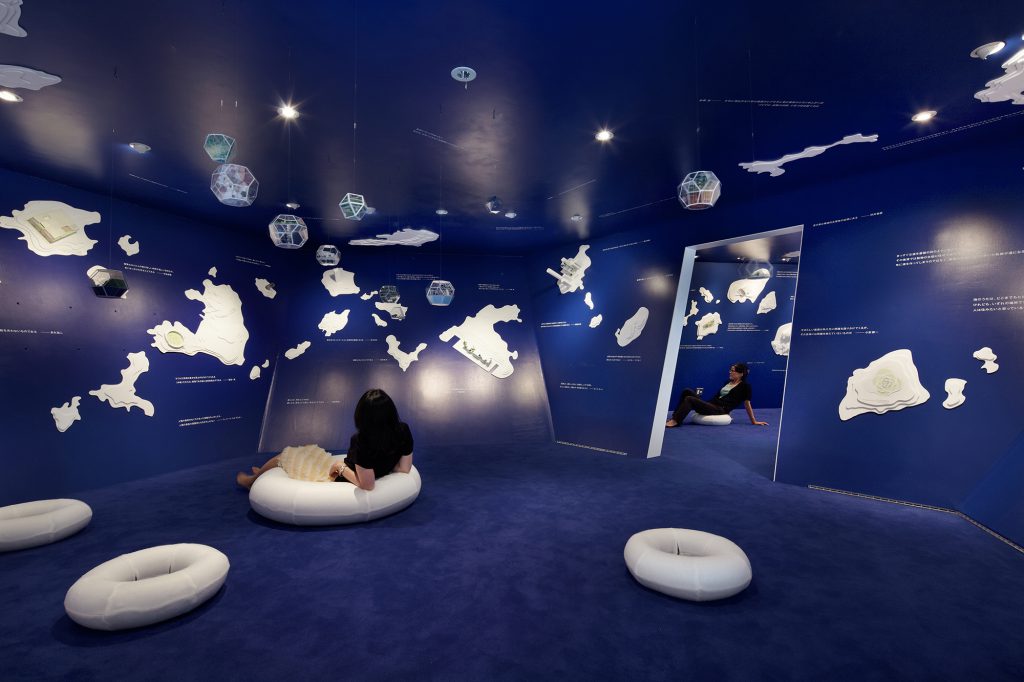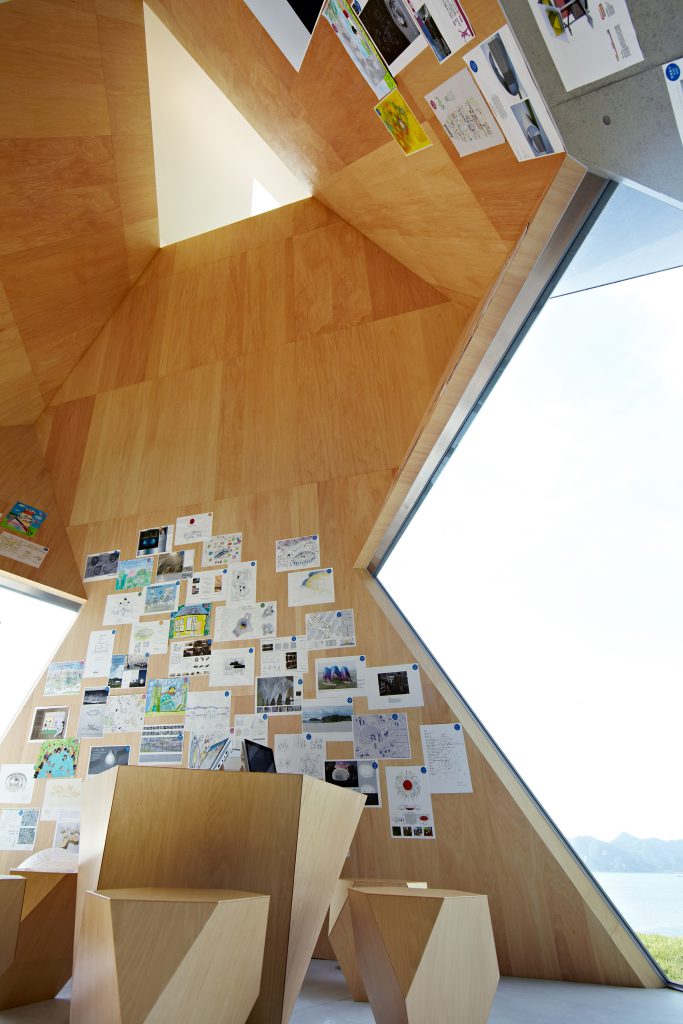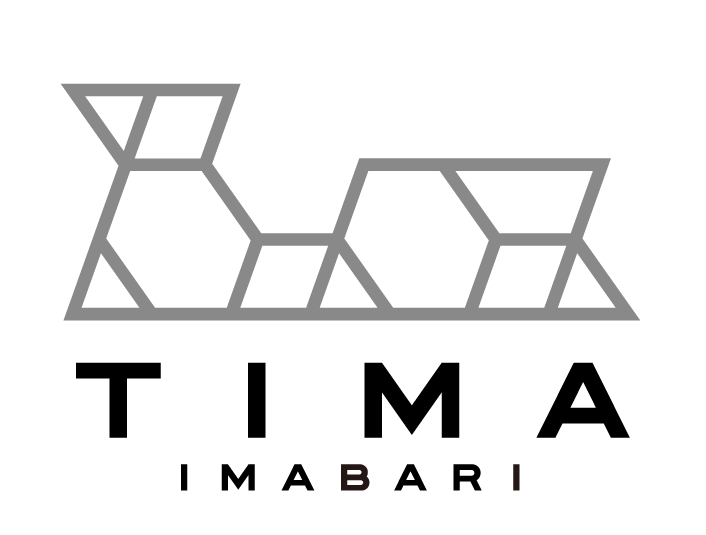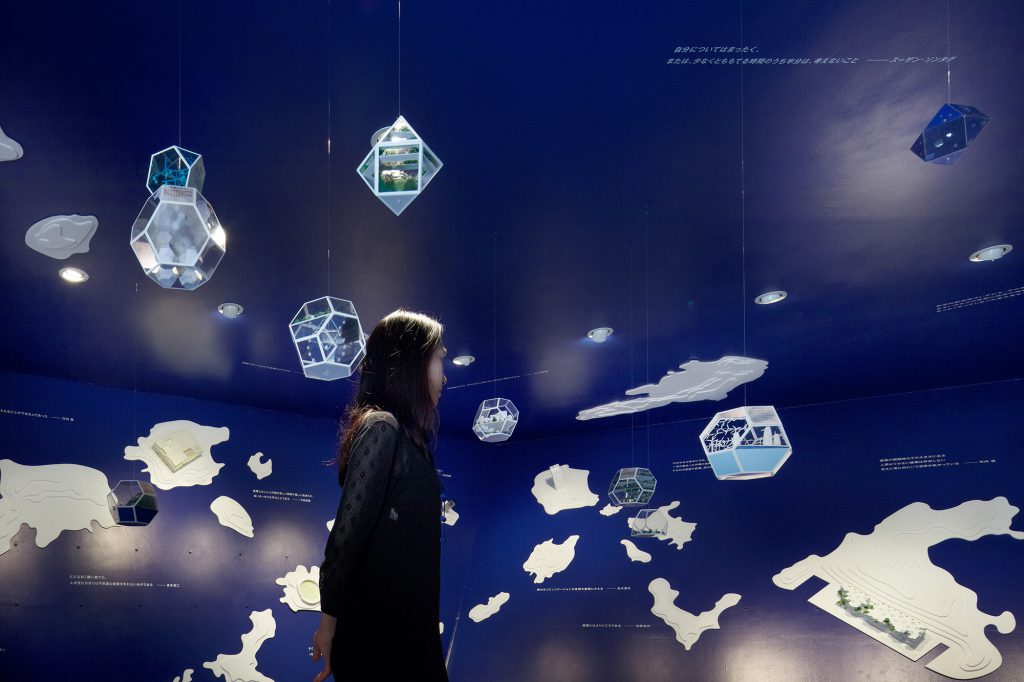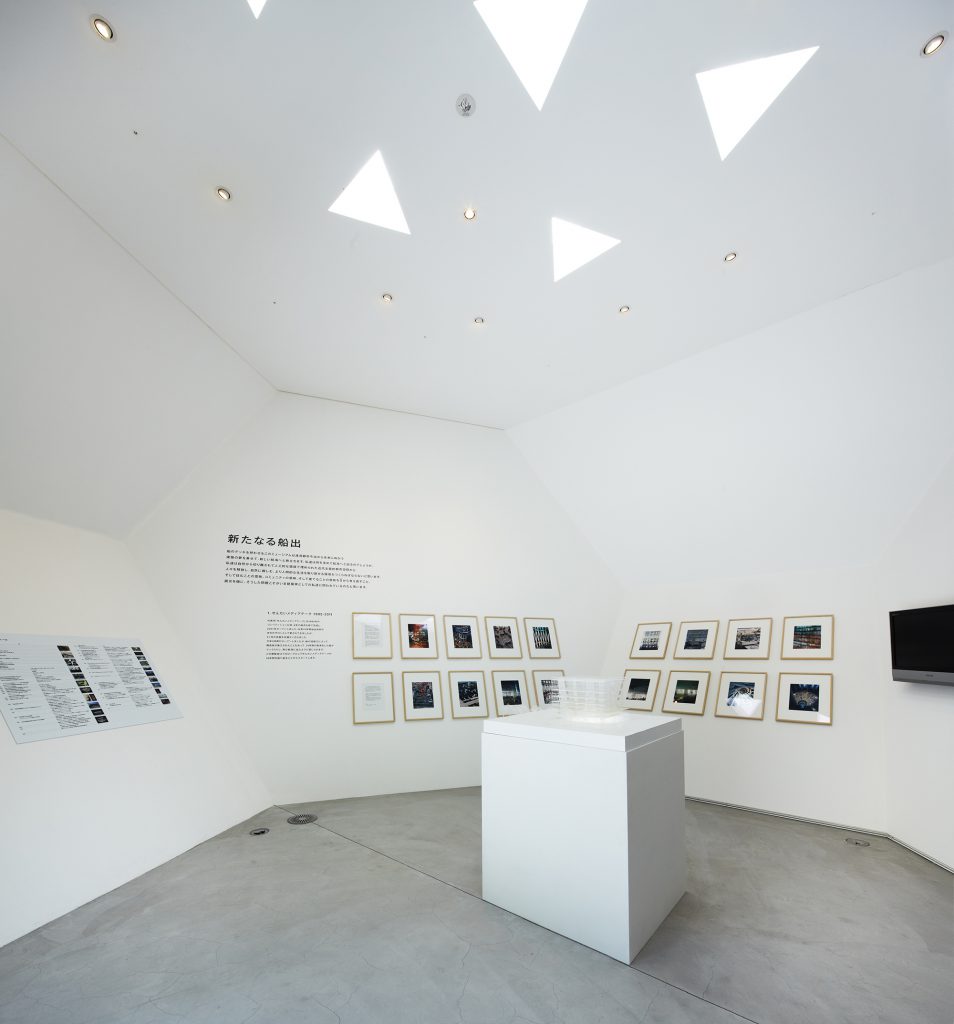
-
Exhibition vol.1
2011.7.30_2012.6.24
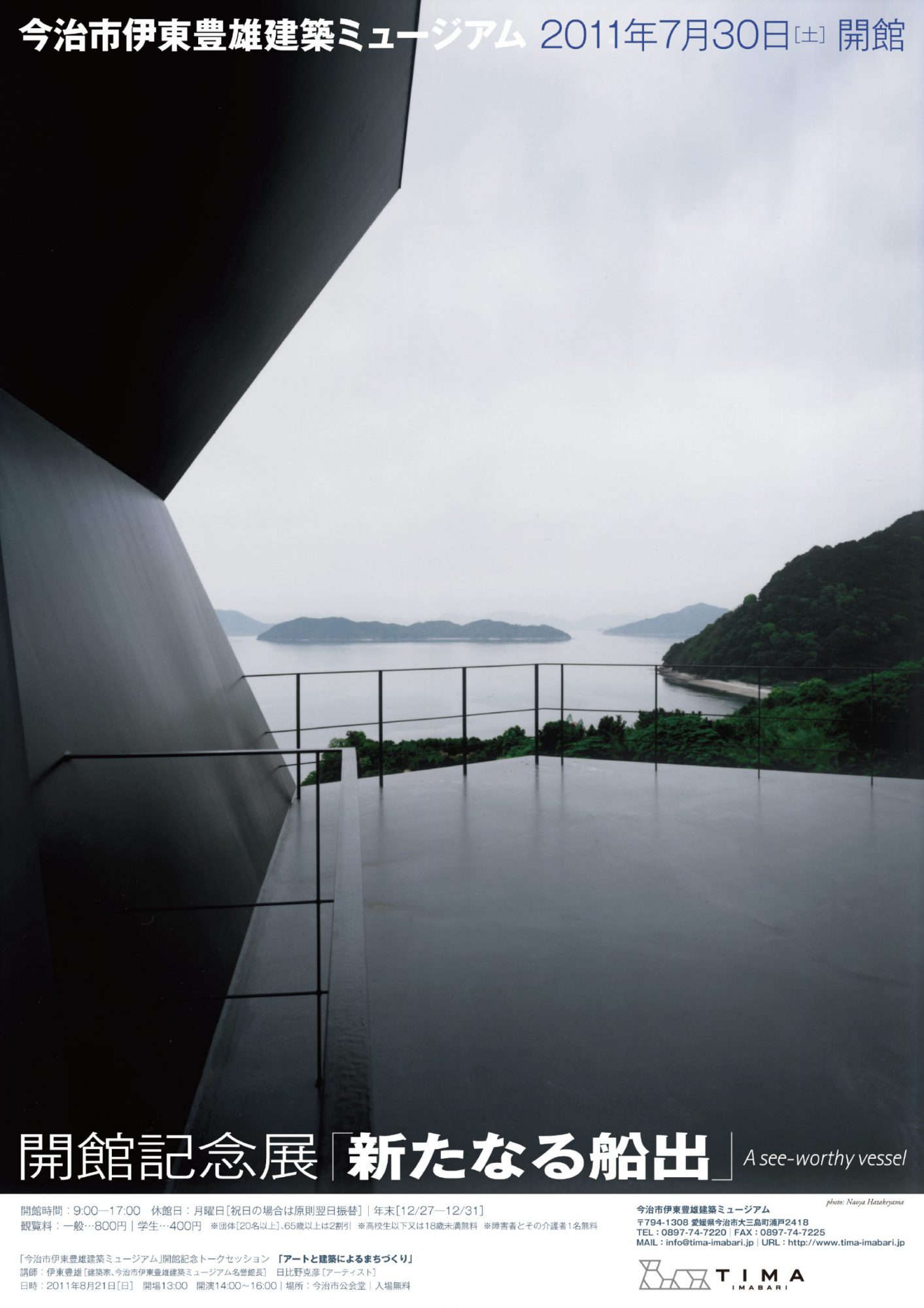
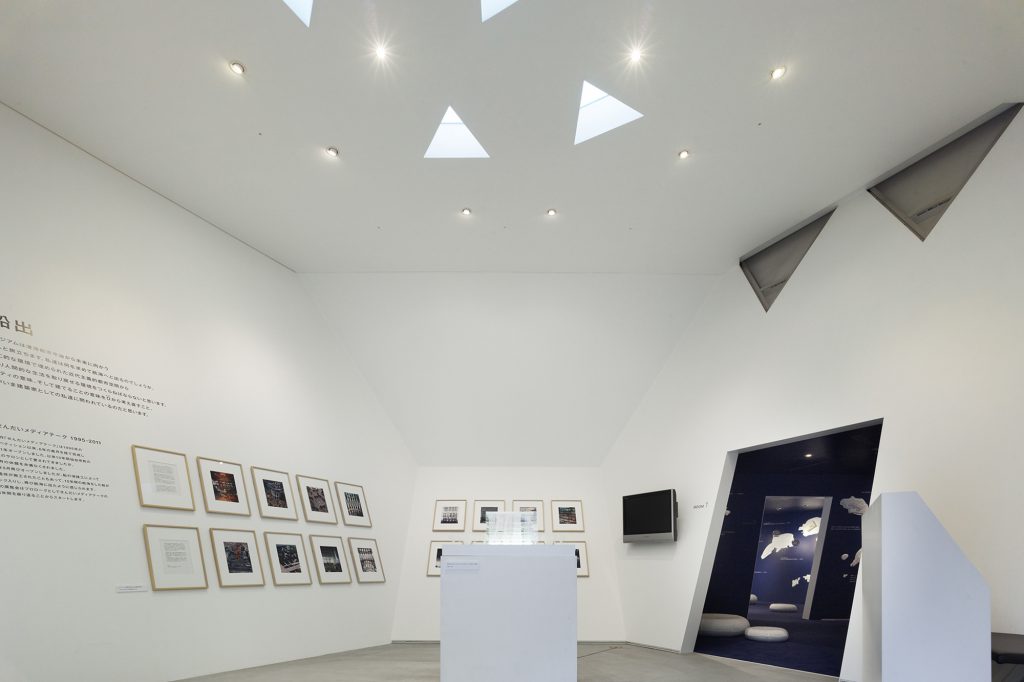
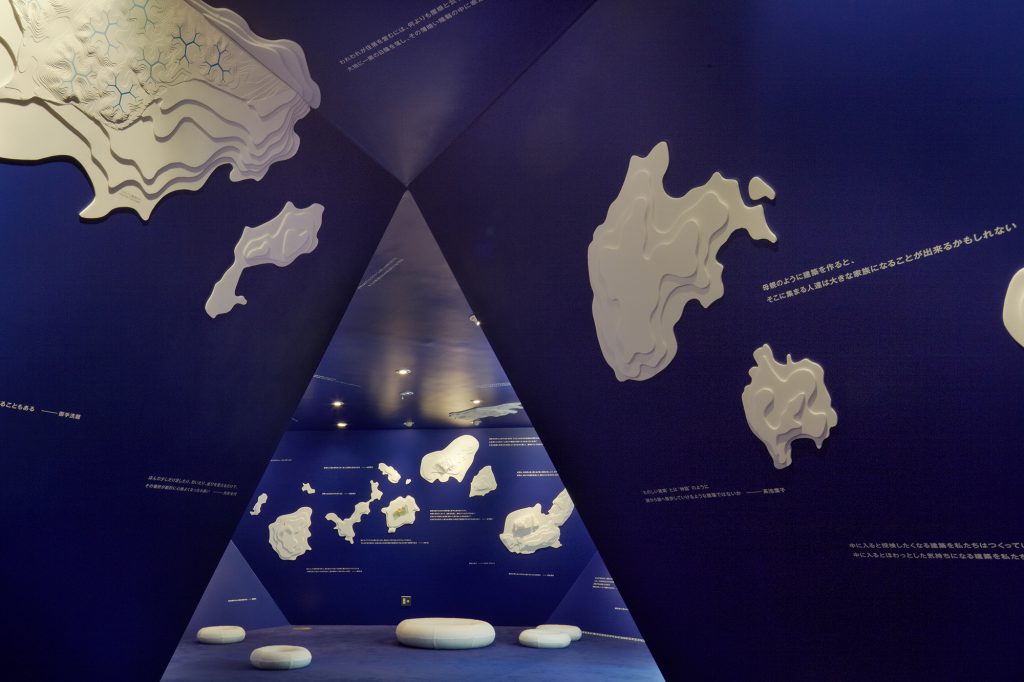
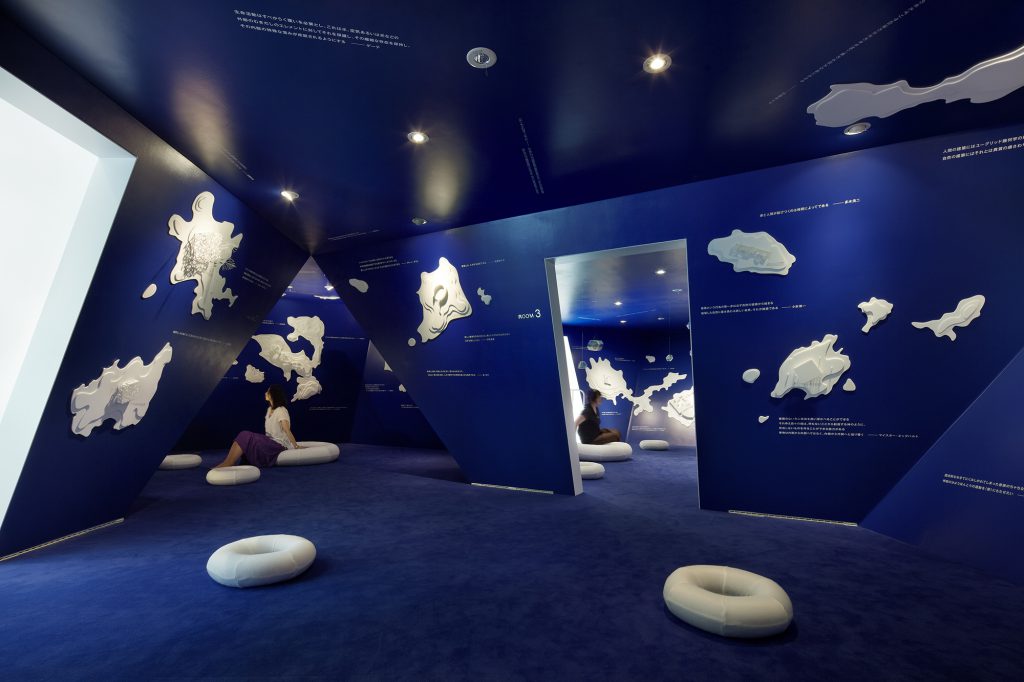
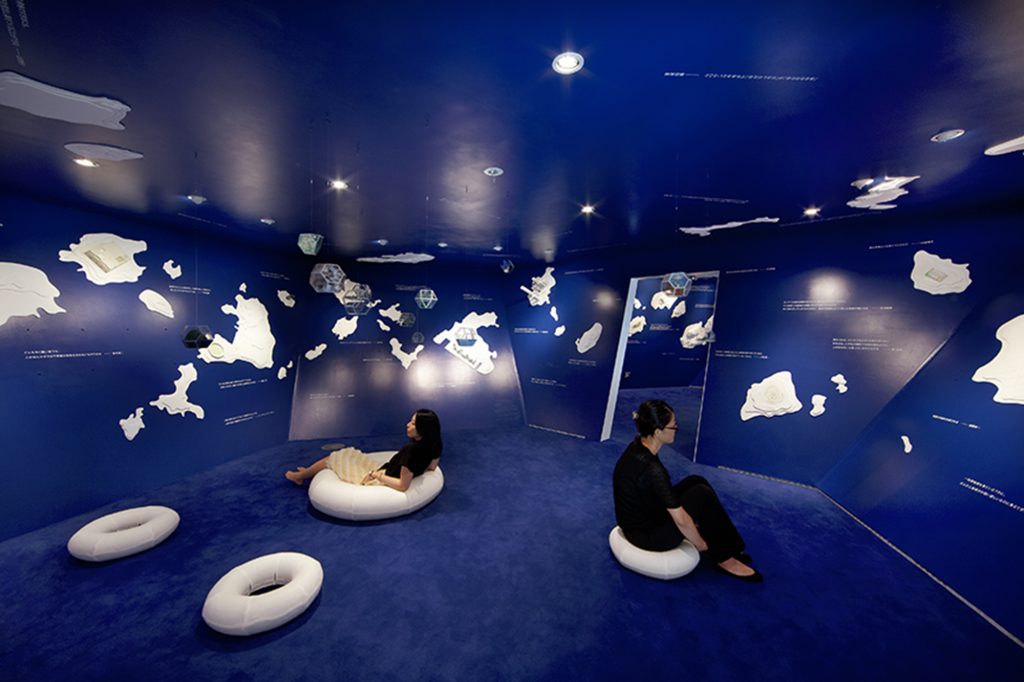
© Taichi Ano
開館記念展
新たなる船出
会期:2011年7月30日(土)〜2012年6月24日(日)
鉄板に覆われた船のデッキのようなミュージアム。これからの建築の夢を乗せ、海事都市今治から、新しい航海へと旅立ちます。建築家・伊東豊雄の作品を展示する、国内に前例のない建築ミュージアム。最先端の建築のデザインや潮流を展示紹介するとともに、地域や風土に根ざした建築や子どもたちに伝えたい未来のまちと建築を考えるワークショップなど、さまざまな活動を展開していきます。開館記念展は3つの主題からなり、多彩な航海を経験していきます。
「新たなる船出」
せんだいメディアテーク開館後10年間の、伊東豊雄の建築活動
「人々の集まるかたち」
建築作品とメッセージを青い海に浮かぶ島々をたどっていきます。
「みんなの家」
世界中の建築家から寄せられた「みんなの家」
今治市伊東豊雄建築ミュージアム オープニング展コンセプト
「今治市伊東豊雄建築ミュージアム」は建築家個人の作品を展示するという国内では前例のないミュージアムです。
このミュージアムは今治に所属する大三島の内海に面して建てられました。外部はすべて鉄板に覆われ、その姿も船のデッキのように見えます。
この建築がほとんど完成した2011年3月11日に東日本大震災が起こり、東日本各地は大きな被害を受けました。津波によって跡形もなくなった被災地や原 発事故を眼前にして、私たちは技術に全幅の信頼をおいて築き上げた経済万能の都市や社会のあり方を根底から見直さざるをえない状況に陥りました。それはまちづくりや建築の思想に関しても全く同じです。私たちはこの震災を機に、まちや建築のあり方を原点に戻して、0ゼロから考え直さなくてはならないと思います。
そのような時期にスタートするオープニング展を、「新たなる船出」と題しました。伊東ミュージアムは港湾都市今治からこれからの建築の夢を乗せて出航する船のように、新しい航海へと旅立つからです。
私たちはこれまで内外の公共的な建築を中心に、人々の集まる場所にさまざまな「かたち」を与えてきました。演劇を観たり、コンサートを聴く場、本を読む場、人を弔う場など行為はさまざまですが、つねに人々の「心が安らぐ場」をつくりたいと考えてきました。建築の中にいても、自然の中にいるように自由でリラックスでき、気持が和らぐような「かたち」を模索し続けてきました。
この展覧会ではこれまでつくってきた建築を巡りながら建築の原初的な意味、すなわち「人々の集まるかたち」を探る展示をします。小さな列島に浮かぶ建築の数々を巡って航海を続けるというストーリーです。
今回の被災地で目にするのは、避難所のなかでも、あるいは仮設住宅の外でも、人々が集まって笑顔で食事をしていたり、小さなコンサートを開いている風景です。こうした極限的な状況のもとでも人々が笑顔で集まる行動にこそ、私たちはコミュニティの最も純粋でプリミティヴな姿を見ることができるのです。そしてこのような場にかたちを与える行為こそが建築の始まりと言えるのではないでしょうか。
私たちはこのような始まりの建築を「みんなの家」と呼び、被災各地に建てようという呼びかけを行なっています。それは仮設住宅地の片隅に置かれる小さなリビングのような建築です。人々がそこに集まって飲んだり食べたりしながら語り合える場であり、あるいは子供も高齢者も一緒に読書ができる場であり、メッセージを交換できる場であるような、小さいけれど心の安らぐ建築です。
伊東の代表作である「せんだいメディアテーク」も今回の震災で一部の天井が落下する等の被害を受けました。2001年のミレニアムオープン以来ちょうど10年を迎えた直後の出来事で、2カ月の休館を余儀なくされました。
「メディアテーク」は図書館、市民ギャラリー等が中心となった複合施設ですが、オープン後の10年間この施設もまた仙台市民にとっての「みんなの家」として愛されてきました。なぜならここには子供から学生、主婦、高齢者にいたる多くの市民が、特定の目的がなくても集まって語り合う「心安らぐ憩いの場」となってきたからです。
「せんだいメディアテーク」の構造体にも多くの鉄板が使われています。しかもその鉄骨工事には被災地である気仙沼に工場を持つ造船の溶接工が力を結集してくれました。そうした意味ではこれもまた船のような建築なのです。その「メディアテーク」が10年の航海を経た後、被災してドックに入り、再びいま新しい「みんなの家」として航海に出ようとしているのです。
〈新たなる船出〉、「今治市伊東豊雄建築ミュージアム」はこれまでの、そしてこれからのまちや建築へのさまざまな想いを乗せて、新しい冒険の途につこうとしているのです。
船のデッキを想わせるこのミュージアムは港湾都市今治から未来の建築の夢を乗せて、新しい航海へと旅立ちます。
しかし、オープン直前に発生した東日本大震災は自然に対する建築やまちのあり方を根底から問い直すまたとない機会となりました。この機に私達は住むことの意味、コミュニティの意味、そして建てることの意味を、0ゼロから考え直さなくてはならないと思います。
伊東豊雄
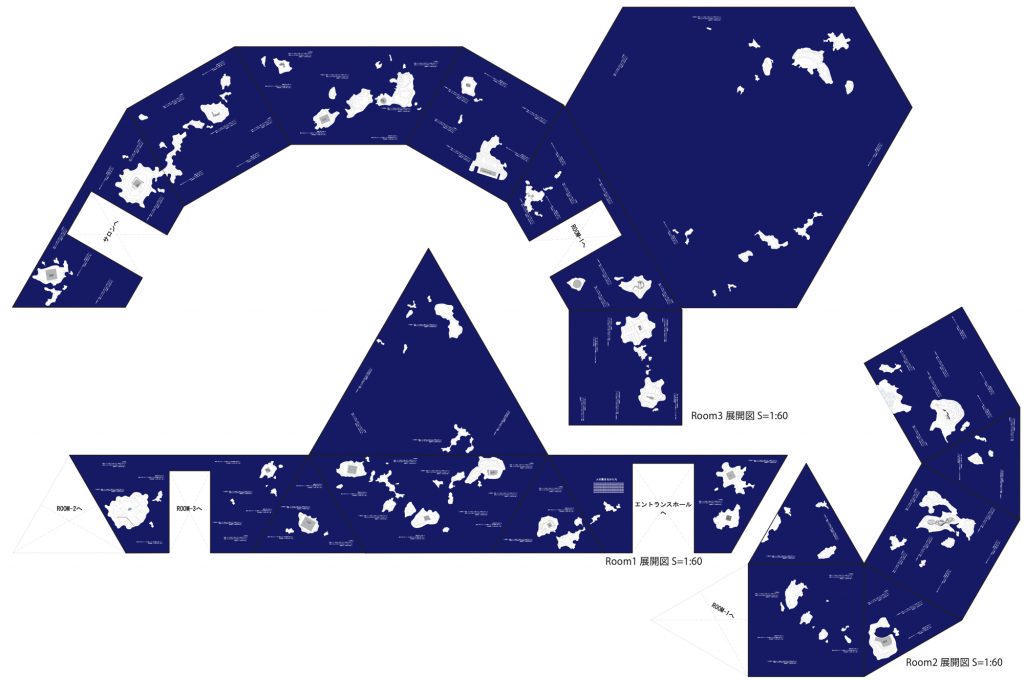
「人々の集まるかたち」展示イメージ
© Toyo Ito & Associates, Architects
English
Opening exhibition :
A see-worthy vessel
July 30, 2011 (Sat) – June 24, 2012 (Sun)
Built to resemble a ship’s deck and carrying a cargo of dreams of architecture for the future, the Toyo Ito Museum has set sail from the port city of Imabari on a new voyage of discovery.
The Great Eastern Japan Earthquake of March 11, 2011, which struck just before the opening of the museum, has forced us to question our assumptions about the relationship between nature, cities and architecture. We must take the opportunity this crisis has provided us to reset those assumptions to zero and reconsider what it means to build, to dwell, to create communities.
A see-worthy vessel, Concept of the Opening Exhibition
Toyo Ito,
Honorary Curator, Toyo Ito Museum of Architecture, Imabari
The Toyo Ito Architecture Museum in Imabari is the first museum in Japan dedicated to the work of an individual architect. The museum overlooks the Seto Inland Sea on the island of Omishima, part of the city of Imabari. The exterior of the building is covered with steel sheeting and is shaped like the deck of a ship.
Construction of the museum was nearly complete when the Great Eastern Japan Earthquake struck on March 11, 2011, devastating vast areas of the country to the northeast. Confronted by the reality of entire towns and villages wiped off the map by the tsunami or abandoned in the wake of the nuclear plant crisis in Fukushima, we have been forced to reexamine the blind faith in technology upon which we built our communities, our economy and our society. The same applies to our approach to architecture and city planning: in the wake of these disasters, we must reset our views on how to build cities and buildings back to zero, and start over again.
In light of the circumstances surrounding the birth of the Ito Museum, we have titled our opening exhibition A see-worthy vessel. Like a ship embarking from the port city of Imabari with a cargo of dreams of architecture for the future, the museum is setting sail on a new voyage into the unknown.
In the course of our work of designing public structures in Japan and overseas, we have created a variety of “forms” for the spaces where people gather. Whether the venue in question is for viewing a play, hearing a concert, reading a book, or mourning the dead, we have always sought to create spaces that set the mind and heart at ease. Through trial and error, we have searched for forms that soothe the spirit, that liberate and relax people as if they were communing with nature, even within the confines of a building.
We would like this exhibition to not only introduce the work we have done so far, but also explore the fundamental meaning of architecture as the “form” given to gatherings of people. We want it to tell the story of an ongoing voyage — our ports of call the many and varied architectural works to be seen on this small archipelago.
In the disaster areas of northeastern Japan, whether in evacuation centers or outside temporary shelters, we see people gathered together, laughing and smiling as they share meals or attend small concerts. What we see in these gatherings of people smiling in the most extreme of circumstances is the purest, most primitive form of community. This is where architecture began: in the effort to give shape to spaces such as these.
My colleagues and I have launched a campaign to build structures providing this most primordial of functions in the disaster zones. We call this type of architecture “everyone’s house.” The structures are only about the size of a living room and can be erected in a corner of a temporary housing area. Though small, they are places to rest the spirit, where people of all ages — from the very young to the elderly — can gather to eat and drink together, to chat, to read, to exchange messages.
The March 11 earthquake also damaged what is perhaps our best-known work, the Sendai Mediatheque, causing some of the ceilings to collapse and forcing us to close the facility for two months. The disaster occurred just after we had celebrated the tenth anniversary of the building, which opened in 2001.
The Sendai Mediatheque is a multipurpose facility that includes a library, a theater, and gallery, workshop and studio spaces for public use. In the decade since it opened, it has become a favorite gathering spot for the citizens of Sendai. It is truly “everyone’s house” because it serves as a place of rest and relaxation for people of all ages and walks of life — children, students, housewives, retirees — who come there to meet and chat, with no particular purpose in mind.
Like the Ito Museum, the Sendai Mediatheque makes ample use of steel sheeting — in fact, much of the construction work on the steel frame was done by ship welders from a factory in Kesennuma, one of the coastal cities hit hardest by the tsunami. In this sense the Mediatheque, too, has its ship-like aspects. After a ten-year voyage the Mediatheque was temporarily placed in drydock, but now it is setting sail once again, ready to serve anew as a vessel for everyone.
With “A New Launching,” the Toyo Ito Architecture Museum in Imabari is embarking on its own voyage, carrying a cargo of architectural visions: of buildings and cities everywhere, past, present and future.
Toyo Ito
